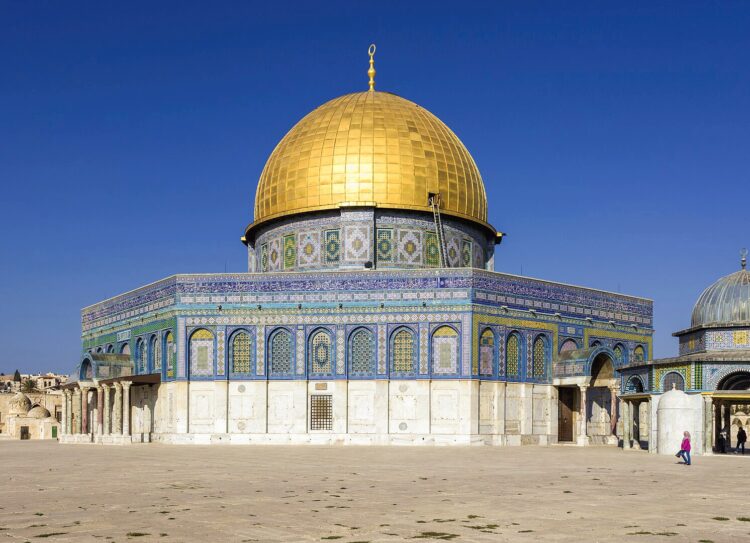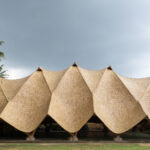Hello there! How is it going? Hidden pyramids are found pretty much everywhere in this world. In Indonesia it would not be different. Perhaps it holds one of the oldest ancient sites of our current civilization and it has become a big controversy in the field of Archeology. Is History really how we have learnt at school?
As time goes by, we, as civilisation, start to accumulate more knowledge and increase our awareness about the world and also to make more connections where there was no connection before. In the words of the Canadian novelist:
“The eye sees only what the mind is prepared to comprehend.” (Robertson Davies).
That’s actually what I think that “evolution” would represent, a more connected, unified world. A world where the perspectives meet towards a common goal, to understand the truth. And not one where “truths” are imposed or used to segregate individuals. In the words of the American author already mentioned in our previous Blog post about the ‘Pura Balinese Temples‘ and their connection with the supposed pyramidal complex of the Mount Meru (or Mount Kailash):
“Truth is the crossroads of perspective.” (Stewart Stafford).
By the way, if you enjoy these types of mysterious topics do not miss some of our latest Blog posts such as the ‘Stepped Monuments‘ of the World, or our post about ‘The Star Forts‘. Pretty intriguing!
Nestled in the lush, green highlands of West Java, Indonesia, lies one of the most enigmatic and controversial archaeological sites in the world—Gunung Padang. This ancient megalithic site has captured the imagination of archaeologists, historians, and the general public alike, not just for its sheer size and complexity, but for the tantalizing possibility that it may conceal a hidden pyramid beneath its surface. The significance of Gunung Padang extends far beyond the shores of Indonesia, potentially rewriting the history of human civilization.

Map of Gunung Padang from Google maps. Source: https://ahotcupofjoe.net/2023/08/gunung-padang-what-archaeology-really-says/
A Brief Introduction to Gunung Padang
Gunung Padang, which translates to “Mountain of Light” in Sundanese, is located in the Karyamukti village of the Cianjur Regency, approximately 120 kilometers southeast of Jakarta. The site has been known to locals for centuries, but it wasn’t until the early 20th century that Dutch colonialists first documented it. However, serious archaeological interest in Gunung Padang didn’t gain momentum until the late 20th and early 21st centuries.
The site itself is a vast megalithic complex, covering an area of approximately 25 hectares at an elevation of 885 meters above sea level. The most striking feature of Gunung Padang is its terraces, built from massive stone blocks, some weighing up to several tons. These terraces rise in a series of steps, creating a tiered pyramid-like structure that dominates the landscape.

Gunung Pagang site with the basalt columns which according to Natawidjaja’s research were carved on location and harvested from distant quarries. Source: https://en.wikipedia.org/wiki/Gunung_Padang
The Enigma of Gunung Padang’s Age
One of the most hotly debated aspects of Gunung Padang is its age. Conventional archaeological methods suggest that the site was constructed around 2,500 to 4,000 years ago, making it one of the oldest megalithic sites in Southeast Asia. However, recent investigations have suggested that Gunung Padang may be far older—possibly tens of thousands of years old.
In 2011, a team of Indonesian geologists and archaeologists, led by Dr. Danny Hilman Natawidjaja, conducted extensive surveys and excavations at Gunung Padang. Their findings were nothing short of revolutionary. Using a combination of ground-penetrating radar, core drilling, and seismic tomography, the team discovered that the stone terraces visible on the surface are merely the top layer of a much larger, multi-layered structure that extends deep into the earth.
Radiocarbon dating of organic material found within these layers indicated that the deepest layers could be as old as 20,000 years, pushing the construction of Gunung Padang back to a time when the world’s first civilizations were still in their infancy. If these findings are accurate, Gunung Padang would predate not only the Pyramids of Giza and Stonehenge but also the advent of agriculture and the establishment of permanent human settlements.
The Hidden Pyramid Hypothesis
Perhaps the most intriguing aspect of Gunung Padang is the hypothesis that it may conceal a hidden pyramid beneath its surface. The team led by Dr. Natawidjaja proposed that the visible terraces are only the outer shell of a much older and larger pyramid-like structure, buried beneath layers of volcanic soil and ash. The idea of a hidden pyramid at Gunung Padang has sparked a wave of excitement and controversy in equal measure.
Proponents of the hidden pyramid hypothesis point to the site’s regular, geometric shape, which they argue is unlikely to be the result of natural geological processes. Furthermore, the presence of ancient stone tools and other artifacts suggests that the site was used for ritualistic or ceremonial purposes, possibly by an advanced civilization long before the dawn of recorded history.
However, the hidden pyramid theory is not without its critics. Some archaeologists and geologists argue that the regular shape of Gunung Padang could be the result of natural geological formations, such as volcanic activity or tectonic movements. They caution against jumping to conclusions based on preliminary evidence and emphasize the need for further research and peer-reviewed studies.

Geophysics Surveys from Natawidjaja et al 2018. Source: https://ahotcupofjoe.net/2023/08/gunung-padang-what-archaeology-really-says/

3D reconstruction of the hidden Stepped Monument with its buried chambers. Source: https://pagaralampos.disway.id/read/650837/geger-video-rute-ruang-bawah-tanah-di-situs-gunung-padang-ternyata-ini

Seismic data showing assumed voids from Natawidjaja et al 2018. Source: https://ahotcupofjoe.net/2023/08/gunung-padang-what-archaeology-really-says/
The Cultural and Historical Significance of Gunung Padang
Regardless of its true age and origins, Gunung Padang is undoubtedly a site of immense cultural and historical significance. For the people of West Java, it is a symbol of their ancient heritage and a reminder of the region’s rich and diverse history. The site is considered sacred by the local Sundanese people, who believe that it was once the dwelling place of ancient deities and ancestral spirits.
Gunung Padang has also become a focal point for debates about the origins of human civilization. If the site does indeed date back to the last Ice Age, it would suggest that advanced human societies existed long before the conventional timeline of history allows. This could have profound implications for our understanding of the development of human culture, technology, and spirituality.
The Future of Gunung Padang
The mystery of Gunung Padang is far from solved. Ongoing research at the site continues to yield new discoveries, and the debate over its true age and significance is likely to continue for years to come. In the meantime, Gunung Padang has become a popular destination for tourists, researchers, and spiritual seekers alike, all drawn by the allure of its ancient stones and the secrets they may hold.
As the world watches and waits for more definitive answers, Gunung Padang stands as a testament to the enduring mystery of our past. Whether it is the remains of a lost civilization or a natural wonder of the Earth, Gunung Padang challenges us to look beyond the surface and consider the possibility that our history may be far more complex—and far older—than we ever imagined.
In summary, perhaps we should keep questioning and uniting ideas. In a world where we claim for individual expression, which reflects personal experiences and acquired knowledge which differ for each person, it is time to acknowledge different perspectives and finding points in common where the perspectives cross. Segregating individuals that bring different ideas and discrediting their scientific efforts will not take us any further. If we really want to expand our understanding of the world, it is necessary to expand our sources of information. ♣
Important Sources:
https://www.bbc.com/portuguese/articles/c9r6zyryxnqo
https://ahotcupofjoe.net/2023/08/gunung-padang-what-archaeology-really-says/
https://en.wikipedia.org/wiki/Gunung_Padang

















